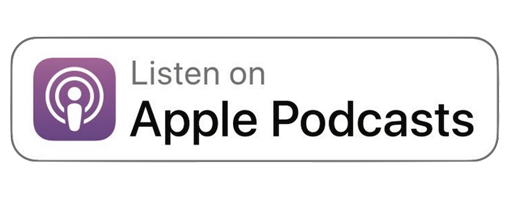Speak Clear English - Enroll Today
INGLÊS & TECNOLOGIA:
IoT – Internet das coisas

Fonte: Diário de TI
No mundo globalizado no qual vivemos, novos conceitos tecnológicos surgem de forma rápida e precisamos estar atentos a essas mudanças. Recentemente, surgiu o conceito de Internet das coisas, em inglês, Internet of Things, IoT, sendo em português e espanhol IdC o acrônimo utilizado.
O que é a Internet das Coisas?
O conceito de Internet das Coisas (IoT) começou a ser desenvolvido em 1999 pelo Massachusetts Institute of Technology (MIT). Quando essa pesquisa começou, o computador era o único dispositivo que tinha acesso à internet. Atualmente, celulares, tablets, TVs têm esse acesso, além de objetos como relógios, carros e geladeiras. Por meio de redes e sistemas, dispositivos, nossas rotinas são compartilhadas, gerando dados que visam auxiliar nosso dia a dia.
A Internet das Coisas refere-se à interconexão digital de objetos do cotidiano com a internet. É uma rede de objetos físicos que são capazes de coletar e transmitir dados. É uma extensão da internet atual que permite que objetos do cotidiano tenham capacidade computacional e de comunicação, por meio do acesso à internet, possibilitando o controle e monitoramento remoto desses objetos. Essas novas capacidades são dotadas de benefícios e malefícios, cada um listado de acordo com a intensidade e forma de uso desses recursos.
Exemplos de aplicações de Internet das Coisas
– Carros inteligentes: veículos cada vez mais autônomos, graças à IoT. Com a tecnologia, eles podem se comunicar com um dispositivo móvel e trocar dados, otimizando o tempo de deslocamento e gerando mais segurança na condução.
– Automação no varejo: automatização do negócio de varejo, como acompanhamento dos horários de maior fluxo de clientes para gestão de pessoas em determinado setor, determinação do público-alvo, faixa etária, entre outros aspectos.
– Sensores industriais: Este é um dos principais desenvolvimentos da Indústria 4.0. Ela ocorre através da modernização dos sistemas, através da implantação de sensores nas máquinas, tornando o processo de fabricação cada vez mais inteligente e autônomo, podendo a máquina gerenciar suas próprias atividades. Os dados gerados nesses sistemas são normalmente enviados ao sistema de gestão para análise do desempenho da produção.
– Smartwatch: otimiza e amplia as funções do telefone celular. Possui sistemas como monitoramento de frequência cardíaca e documentação de atividades físicas.
– Smart homes: permite o controle e monitoramento de objetos em casas inteligentes. A comunicação ocorre por meio da comunicação eletrônica com um smartphone para permitir que o usuário gerencie os ambientes na palma da mão. Exemplos são geladeiras inteligentes, automação de compras automatizadas, sistemas de televisão e iluminação.
– Termostatos inteligentes: acessórios que medem a temperatura de um ambiente, trabalhando com a regulação de aparelhos como ar condicionado ou aquecedores, adaptando os equipamentos à rotina das pessoas e à realidade do ambiente em que foram instalados.
– Smart cities: uma ampla aplicação de tecnologias digitais para melhorar o modo de vida de uma população. Um exemplo disso ocorre em Barcelona, onde o sistema de coleta de resíduos é totalmente automatizado e funciona a vácuo, com um sistema que interliga os lixões por meio de uma rede subterrânea.
– IoT na saúde: disponibilização de dispositivos que conectam e compartilham dados de pacientes e pesquisas, facilitando e otimizando o tempo de entrega e recebimento de diagnósticos.
English Vocabulary to Know Section
1) Emerging : starting to exist.
2) Acronym: an abbreviation consisting of the first letters of each word in the name of something, pronounced as a word.
3) Network: a large system consisting of many similar parts that are connected together to allow movement or communication between or along the parts, or between the parts and a control centre.
4) Systems: a set of connected things or devices that operate together.
5) Devices: an object or machine that has been invented for a particular purpose.
6) Shared: owned, divided, felt, or experienced by more than one person.
7) Interconnection: connection with other things that are related to each other.
8) Transmitting: to broadcast something, or to send out or carry signals or messages using radio, television, etc.
9) Monitoring: observe and check the progress or quality of (something) over a period of time; keep under systematic review.
10) Resource: a useful or valuable possession or quality of a country, organization, or person.
Esqueci alguma palavra que você deseja saber a definição? Comente abaixo para solicitar novas definições ou termos relacionados à tecnologia.
Pronto para mais inglês? Fale inglês claramente ao ingressar em um dos meus cursos de inglês que mudam sua vida.
Clique em um dos links a seguir para começar a falar e escrever um inglês mais claro!
1)New free mini-course “punctuation mistakes to avoid”
2) Clear English Pronunciation Video Course
3) English Vocabulary – Audio Files & PDF – TOEFL & IELTS
4) Idioms in Conversation
5) Jumpstart Your English Audiobook + eBook
Siga-nos no Youtube e no Instagram:
@studyenglishwithandrea – Postagens diárias de inglês, dicas e vocabulário!
@citizenshiptest – Para quem quer estudar para o Teste de Cidadania Americana.
Fontes:
https://www.totvs.com/blog/inovacoes/aplicacoes-da-internet-das-coisas/
https://www.digitalhouse.com/br/blog/exemplos-de-internet-das-coisas
Speak Clear English - Enroll Today

Jhessika Nascimento
Director of International Partnerships
Jhessika Nascimento is the Director of International Partnerships for Study With Andrea and lives in Brasilia, Brazil.
Jhessika is a bilingual teacher of English and Portuguese, studying for a Master's Degree in Strategic Management in Information Technologies at the Universidad Internacional Iberoamericana.
Graduation in Letters - Portuguese and English.
Postgraduate in Teaching in Higher Education.
Postgraduate in Risk Management and Cybersecurity.
Postgraduate Executive MBA in Process Management BPM-CBOK.
Postgraduate in Translation and Proofreading of Texts in English.
The following is a TOEFL Reading practice test to help you prepare for the Reading section of the TOEFL test.
Instructions: Read the sample passage below and then answer the questions that follow.
TOEFL Reading Practice Passage
Gorillas are ground-dwelling, predominantly herbivorous apes that inhabit the forest of central Sub-Saharan Africa. The genus Gorilla is divided into two species: the eastern gorillas and the western gorillas (both critically endangered), and either four or five subspecies. They are the largest living primates. The DNA of gorillas is highly similar to that of humans, from 95 to 99% depending on what is included, and they are the next closest living relatives to humans after the chimpanzees and bonobos.
Gorillas' natural habitats cover tropical or subtropical forest in Sub-Saharan Africa. Although their range covers a small percentage of Sub-Saharan Africa, gorillas cover a wide range of elevations. The mountain gorilla inhabits the Albertine Rift montane cloud forests of the Virunga Volcanoes, ranging in altitude from 2,200 to 4,300 metres (7,200 to 14,100 ft). Lowland gorillas live in dense forests and lowland swamps and marshes as low as sea level, with western lowland gorillas living in Central West African countries and eastern lowland gorillas living in the Democratic Republic of the Congo near its border with Rwanda.
(#1) Gorillas move around by knuckle-walking, although they sometimes walk upright for short distances, typically while carrying food or in defensive situations. (#2) A 2018 study investigating the hand posture of 77 mountain gorillas at Bwindi Impenetrable National Park (8% of the population) found that knuckle walking was done only 60% of the time, and they also supported their weight on their fists, the backs of their hands/feet, and on their palms/soles (with the digits flexed). (#3) Studies of gorilla handedness have yielded varying results, with some arguing for no preference for either hand, and others right-hand dominance for the general population. (#4)
The eastern gorilla is more darkly colored than the western gorilla, with the mountain gorilla being the darkest of all. The mountain gorilla also has the thickest hair. The western lowland gorilla can be brown or grayish with a reddish forehead. In addition, gorillas that live in lowland forest are more slender and agile than the more bulky mountain gorillas. The eastern gorilla also has a longer face and broader chest than the western gorilla. Like humans, gorillas have individual fingerprints. Their eye color is dark brown, framed by a black ring around the iris. Gorilla facial structure is described as mandibular prognathism, that is, the mandible protrudes farther out than the maxilla. Adult males also have a prominent sagittal crest.
A gorilla's lifespan is normally between 35 and 40 years, although zoo gorillas may live for 50 years or more. Colo, a female western gorilla at the Columbus Zoo and Aquarium, was the oldest known gorilla at 60 years of age when she died on 17 January 2017.
Questions
1. According to the passage, gorillas can live in
a. a variety of altitudes.
b. several different countries in Africa.
c. thick forests.
d. lowland forests only.
2. All of the following is true about gorillas EXCEPT
a. they primarily eat smaller animals.
b. they live in a forest habitat.
c. their genetics are similar to humans.
d. their diet consists of vegetation.
3. Look at the word predominantly in paragraph 1. The word predominantly in this passage refers to
a. impulsively
b. unfortunately
c. mainly
d. lastly
4. Look at the word inhabits in paragraph 2. The word inhabits in this passage refers to
a. lives in
b. protects
c. goes
d. works
5. The author implies that
a. most gorillas prefer using their left hand over their right.
b. gorillas rarely walk on their knuckles.
c. gorillas regularly walk upright for long distances.
d. studies haven't solidly proven which hand gorillas prefer using.
6. Why does the writer mention that the eastern gorilla also has a longer face and broader chest than the western gorilla?
a. To validate the importance a broad chest in western gorillas
b. To define the meaning of "broad"
c. To highlight a physical difference between types of gorillas
d. To demonstrate that most gorillas are identical in physical build
7. Which of the following statements is true for BOTH eastern and western gorillas.
a. Both eastern and western gorrilas are brown with red foreheads.
b. Both eastern and western gorrilas have unique fingerprints.
c. Both eastern and western gorrilas have thin hair.
d. Both eastern and western gorrilas have light brown eyes.
8. In Paragraph 3, look at the four numbers (#1, #2, #3, #4) that indicate where the following sentence would be added to the passage.
Such a range of hand postures was previously thought to have been used by only orangutans.
Where would the sentence best fit?
(View all the correct answers below.)
Great job! If you're ready to take your TOEFL preparation to the next level, go to StudyWithAndrea.com/TOEFL.
Answers: 1. d 2. a 3. c 4. a 5. d 6. c 7. b 8. #3
Click on one of the following links to start speaking clearer English!
1) TOEFL MASTER CLASS
2) free mini-course "punctuation mistakes to avoid"
3) Clear English Pronunciation Video Course
4) English Vocabulary - Audio Files & PDF - TOEFL & IELTS
About Andrea
Andrea Giordano is the founder of StudyWithAndrea.com and has taught more than 1,000,000 students from 180 countries. Andrea holds a Master of Education (TESOL) from Shenandoah University, and is the former Executive Director of TESOL and ESL programs at Campbellsville University. Andrea is a proven leader in online English teaching and is driven by her passion to help you speak English clearly.





